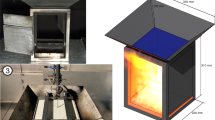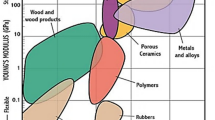The possibility of increasing the survivability of the system of refueling combat vehicles during combat operations through the development of a new method that reduces refueling time and the use of new technical means to implement it is substantiated. The essence of the method of accelerated refueling of combat vehicles is to place an elastic fuel reservoir (EFR)under the combat vehicle wheel and run it over at low motion velocity, resulting in the fuel displacement from EFR to the fuel tank of the vehicle being refueled. The study results indicate the feasibility of accelerated refueling of combat vehicles by this method. A mathematical model for determining the pressure in the EFR run over a vehicle wheel was refined in this study. A mathematical model for determining the stress-strain state of an EFR loaded with internal excessive alternating pressure was proposed, allowing one to assess stresses arising in the EFR wall when refueling combat vehicles and optimize the EFR design. Experimental results on the of accelerated refueling of vehicles confirmed the efficiency of the proposed refueling method and the EFR design.





Similar content being viewed by others
References
Decree of the President of Ukraine No. 473/2021 on the decision of the National Security and Defense Council of Ukraine of August 20, 2021 “On the Strategic Defense Bulletin of Ukraine” [in Ukrainian].
Methodological Manual on the Organization and Implementation of Security and Defense, Daily Activities of Military Units (Subdivisions) of the Armed Forces of Ukraine Located in Base Camps [in Ukrainian], Kyiv (2014).
A. V. Kovtun, R. O. Kaidalov, V. O. Tabunenko, “Methodology for substantiating the parameters of the mechanical system ‘vehicle–fuel tank’ for accelerated refueling of vehicles in a special operation to neutralize illegal armed groups,” Information Processing Systems [in Ukrainian], 70, Issue 3, 64-72 (2008).
Technical Description and Operating Instructions [in Russian], Military Research Institute, Moscow (1980).
V. Mitrich, “Soft containers for fueling,” Foreign Military Review [in Russian], No. 5, 78 (1986).
G. I. Bogomaz, N. E. Naumenko, and I. Yu. Khyzha, “A finite element approach to the study of the dynamics of structures containing containers with liquid,” in: Issues of Applied Mathematics and Mathematical Modeling [in Ukrainian], RVV DNU, Dnepropetrovsk (2002).
E. L. Hart, V. S. Hudramovich, and O. A. Marchenko, “Effect of an annular inclusion on the stress-strain state of a spherical shell with a circular hole under the action of a uniform internal pressure,” Problems of Computational Mechanics and Strength of Structures [in Ukrainian], Issue 29 (2019), pp. 53–61.
P. I. Dmitrienko, “Application of the method of residual expansion of cylinders. From the experience of hydraulic testing of vessels by internal pressure,” Working paper, Paton Electric Welding Institute of the National Academy of Sciences of Ukraine, RZ DRI-120214, Kyiv. http://www.dri1.cc.ua/RZ/RZ-DRI-120214.pdf
S. V. Bespalko and V. I. Bogachev, “Studies on the propagation of the change in pressure of a liquid cargo in the boiler of a railroad tank vehicle under water hammer,” Transport, No. 3, 61–63 (2013).
A. V. Konstantinov, O. S. Limarchenko, V. V. Lukyanchuk, and A. A. Nefedov, “Dynamic methods of damping vibrations in the system ‘structure–liquid with a free surface’,” Prikl Mekh, 55, No. 1, 64–57 (2019).
M. V. Pavlyuchenkov, “Rationalization of the design of supporting devices for tank vehicles for liquid cargoes,” Science and Progress of Transport [in Ukrainian], 49, No. 1, 151–159 (2014).
R. N. Bakhtizin, R. B. Masalimov, R. M. Zaripov, and K. R. Zaripova, “Stress-strain state and strength assessment of a pipeline composed of curved inserts, taking into account the effect of internal working pressure and temperature stresses on the pipe,” Oil and Gas Business [in Russian], No. 5, 207–243 (2013).
A. V. Yaskelyain, “Investigation of hydraulic shock in a liquid at pipeline vibrations,” in: Problems of Strength and Plasticity [in Russian], Issue 70 (2008), pp. 62–70. https://doi.org/10.32326/1814-9146-2008-70-1-62-70
D. V. Akimov, V. Z. Grishchak, S. N. Grebenyuk, and S. I. Gomenyuk, “Comparative analysis of methods for calculating the stress-strain state of structural elements of a launch vehicle,” New Materials and Technologies in Metallurgy and Mechanical Engineering [in Ukrainian], No. 2, 116–120 (2016).
L. I. Balabukh, N. A. Alfutov, and V. I. Usyukin, Construction Mechanics of Rockets, Vysshaya Shkola, Moscow (1984).
P. P. Gontarovskyi, N. V. Smetankina, N. G. Garmash, et al., "Investigation of the stress-strain state of the fuel tank of a wafer construction of a launch vehicle,” Problems of Computational Mechanics and Strength of Structures [in Ukrainian], Issue 29 (2019), pp. 91–102.
V. S. Hudramovich, “Modeling of the stress-strain state of shell structures of rocketry and energy,” Tekhn Mekh, No. 4, 97–104 (2013).
P. V. Yasnii, Y. I. Pyndus, and M. I. Gud, “Methodology for experimental study of the influence of the load spectrum on the behavior and fatigue damage during the transportation of a launch vehicle,” in: Proc. of the Conference “Damage of Materials during Operation, Methods of Its Diagnostics and Forecasting” (September 19–22, 2017, Ternopil), TNTU, Ternopil (2017), pp. 167–168.
O. P. Herasymchuk, E. L. Seleznyov, and S. P. Shymchuk, Hydraulics, Hydraulic and Pneumatic Drives [in Ukrainian], Lutsk NTU, Lutsk (2019).
Author information
Authors and Affiliations
Corresponding author
Additional information
Translated from Problemy Mitsnosti, No. 5, pp. 112 – 120, September – October, 2023.
Rights and permissions
Springer Nature or its licensor (e.g. a society or other partner) holds exclusive rights to this article under a publishing agreement with the author(s) or other rightsholder(s); author self-archiving of the accepted manuscript version of this article is solely governed by the terms of such publishing agreement and applicable law.
About this article
Cite this article
Kovtun, A.V., Kaidalov, R.O., Tabunenko, V.O. et al. Strength Assessment of Elastic Fuel Reservoirs During Accelerated Refueling of Combat Vehicles. Strength Mater 55, 967–973 (2023). https://doi.org/10.1007/s11223-023-00588-3
Received:
Published:
Issue Date:
DOI: https://doi.org/10.1007/s11223-023-00588-3




